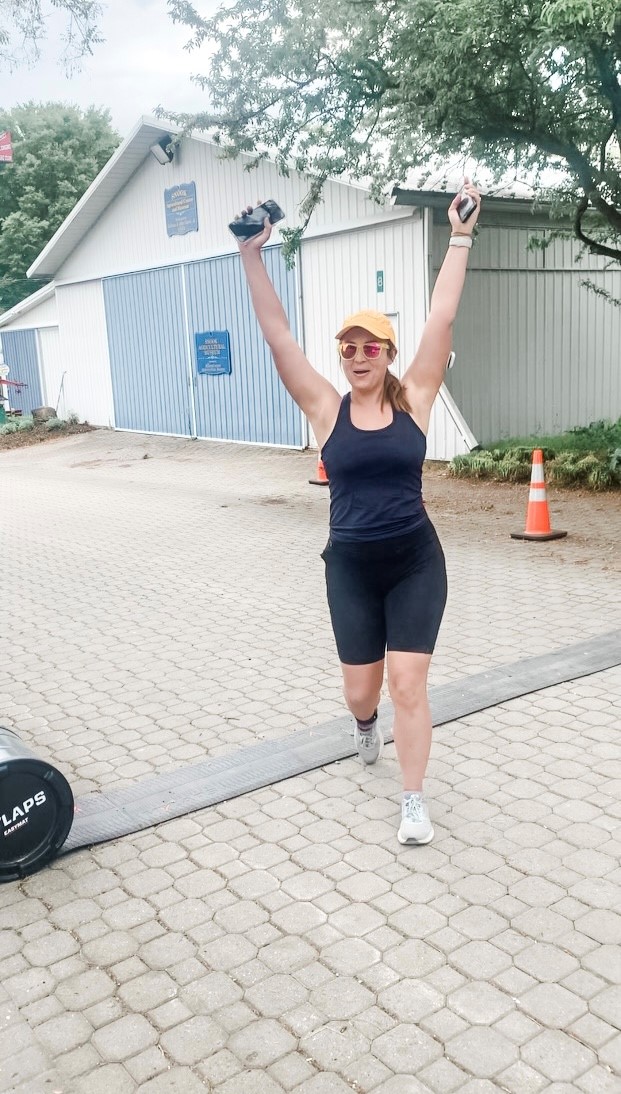What I Bring on a Run with T1D (and How I Store It!)

With the weather warming up, I find myself moving more and taking more of my workouts outside. Running can already be a tricky game with diabetes and moving away from indoor workouts on the treadmill where you can store low snacks in a locker or by your side can cause another burden. Not to mention, how many low snacks can you realistically stuff into your pants pockets before they end up falling down?
Luckily, there are many logistical tips and tricks that make running outside so much easier for people with diabetes. Here are a few of the things I’ve tried that have helped me — whether it’s a quick jog around the block or on a long run training for a marathon.
What I Bring
Low Snacks: Bringing low snacks along on a run is essential for me. When I’m on a run, I prefer to stick to low snacks that are high glycemic so that my body can digest and absorb the glucose quickly if needed. Some of my favorites include energy gels, fruit leather, dried fruit, or sweet candy (like Skittles). Items that are pre-packaged are helpful so that I can easily grab them on the way out the door!
Drinks with carbohydrates (like sports drinks or juice) can also be helpful if I have a way to store it (more on that below). However, I find that some fruit juices that are higher in fructose can cause me GI distress during activity.
PDM: Omnipod® makes it so much easier for me to live an active lifestyle since it’s tubeless; when I had a traditional pump, I needed to clip it on my clothes. I like to bring my PDM (Personal Diabetes Manager) along on runs just in case I need to adjust my insulin (or in case I grab a delicious treat when I’m done).
Related: Ready to ditch the daily injections or send your tubed pump packing? Sign up for a free 30-day trial* of the Omnipod DASH®.
For a shorter run I just stick it in my pocket or belt and for a longer run, where things may get a little sweatier, I put my PDM in a plastic bag so that it stays dry*. This is especially helpful on a humid summer day!
Medical ID: I always wear a medical ID (mine is a band that fits on my smart watch) so that if anything happens during my run, I can be sure that I get the help I need. Many phones also allow medical information to be entered in case of an emergency.
Hydration: On longer runs, or on hot days, I always bring water or an electrolyte drink with me. Hydration is so important, and it’s easy to become dehydrated when I sweat!
Phone: Of course, I always bring my phone so that I can check my CGM (continuous glucose monitor) and for my music!
How I Store It
Pockets: Pockets are my best friend. I find that pockets that are held tighter on the body are more beneficial for running because my items stay more secure.
Running Belts and Vests: Most sports stores sell running belts and vests that can be very handy for people with diabetes! They can allow for storage of your PDM, low snacks and sometimes, can even carry water bottles which can be filled with carb-filled sports drinks. Running with a belt or vest the first few times can feel awkward, but after a while it feels natural and I find it to be so convenient to hold everything I need!
Some running belts and vests also feature waterproof pockets that are perfect for storing items like a PDM.
Car/Home: If I’m doing a shorter loop around my neighborhood or near my car, I will sometimes keep my supplies (or extras) in a cooler in my car or at home. If I start to notice a low glucose level, I can easily return to my supplies to treat the low. Even if I’m storing some supplies at my car/home, I still like to keep my PDM and at least a small snack on me just in case of a low blood glucose or if I need to adjust my insulin!
Have Fun
I hope that these tips help you as you take your running outside this spring and summer! As always with diabetes, it’s better to be over-prepared when it comes to exercise in order to stay safe. Happy running!